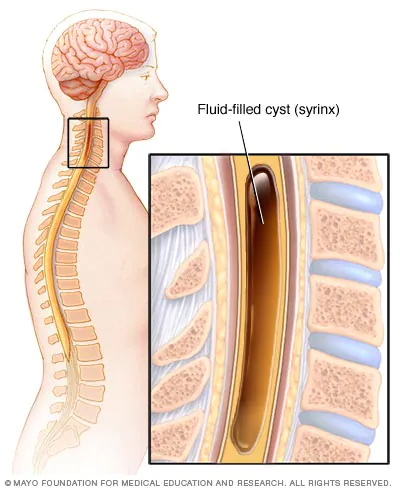Follistatin also known as activin-binding protein and formerly known as FSH-suppressing protein (FSP)
Follistatin also known as activin-binding protein is a protein that in humans is encoded by the FST gene. Follistatin is an autocrine glycoprotein that is expressed in nearly all tissues of higher animals. Its primary function is the binding and bioneutralization of members of the TG
Olfactory tubercle (OT) aka tuberculum olfactorium
The olfactory tubercle (OT), also known as the tuberculum olfactorium, is a multi-sensory processing center that is contained within the olfactory cortex and ventral striatum and plays a role in reward cognition. The OT has also been shown to play a role in locomotor and attentional be
Cells in the APUD system may include melanocytes
Melanocytes are melanin-producing neural crest-derived cells located in the bottom layer (the stratum basale) of the skin’s epidermis, the middle layer of the eye (the uvea), the inner ear, vaginal epithelium, meninges, bones, and heart. Melanin is a dark pigment primarily
Carotid body glomus cells mediate essential reflex responses to arterial blood hypoxia
Glomus cells are the cell type mainly located in the carotid bodies and aortic bodies. Glomus type I cells are peripheral chemoreceptors which sense the oxygen, carbon dioxide and pH levels of the blood. When there is a decrease in the blood’s pH, a decrease in ox
Physiology of the gastrointestinal system
of the intestinal UPPER GI TRACT
The Garden of Earthly Delights, Hieronymus Bosch
The Garden of Earthly Delights is the modern title[a] given to a triptych oil painting on oak panel painted by the Early Netherlandish master Hieronymus Bosch, between 1490 and 1510, when Bosch was between 40 and 60 years old. It has been h
A syrinx is a fluid-filled neuroglial cavity within the spinal cord, in the brain stem, or in the nerves of the elbow
A syrinx is a rare, fluid-filled neuroglial cavity within the spinal cord (syringomyelia), in the brain stem (syringobulbia), or in the nerves of the elbow, usually in a young age. Presentation Symptoms usually begin insidiously between adolescence and age 45.
Delta cells (δ-cells or D cells) are somatostatin-producing cells
Delta cells (δ-cells or D cells) can be found in the stomach, intestine and the pancreatic islets. Delta cells comprise ca 5% of the cells in the islets but may interact with many more islet cells than suggested by their low numbers. In rodents, delta-cells a
β-Methylamino-L-alanine, or BMAA
β-Methylamino-L-alanine, or BMAA, is a non-proteinogenic amino acid produced by cyanobacteria. BMAA is a neurotoxin and its potential role in various neurodegenerative disorders is the subject of scientific research. Structure and properties BMAA is a de
Lytico-bodig disease, Guam disease, or amyotrophic lateral sclerosis-parkinsonism-dementia (ALS-PDC) is a neurodegenerative disease or all of them
Lytico-bodig (also Lytigo-bodig) disease, Guam disease, or amyotrophic lateral sclerosis-parkinsonism-dementia (ALS-PDC) is a neurodegenerative disease of uncertain etiology endemic to the Chamorro people of the island of Guam&nbs
Adrenarche and Adrenopause
Adrenarche is an early stage in sexual maturation that happens in some higher primates and in humans, typically peaks at around 20 years of age, and is involved in the development of pubic hair, body odor, skin oiliness, axillary hair, sexual attraction/sexual desire/increased libido
Medical uses of adrenaline
Main article: Epinephrine (medication) As a medication, it is used to treat several conditions, including allergic reaction anaphylaxis, cardiac arrest, and superficial bleeding. Inhaled adrenaline may be used to improve the symptoms of croup. It may also be used for asthma when other tr
Vernon Kellogg (1867 – 1937) was an American entomologist (bug guy)
Vernon Lyman Kellogg was an American entomologist, evolutionary biologist, and science administrator. He established the Department of Zoology at Stanford University in 1894, and served as the first permanent secretary of the National Research Council in Washington, DC.
PPARGC1A is also known as human accelerated region 20 (HAR20) and may have played a key role in differentiating humans from apes
Peroxisome proliferator-activated receptor gamma coactivator 1-alpha (PGC-1α) is a protein that in humans is encoded by the PPARGC1A gene. PPARGC1A is also known as human accelerated region 20 (HAR20). It may, therefore, have played a key role in differentiating humans from apes. PGC-1α is
Xylitol: sweetener and laxative from hell
Xylitol, a natural sugar alcohol, has gained popularity as a low-calorie sweetener and the peddlers have attributed numerous health benefits to their product. This post is going to focus on one that doesn’t get nearly enough attention except in the countries where it was banned in things like
Goa stone
A Goa stone or Lapis de Goa was a man-made bezoar that was considered to have medicinal and talismanic properties. Goa stones were made in Goa, India and exported to apothecaries in Europe from the mid-16th to 18th century. Goa stones were manufactured by Jesuits in the late seventeent













